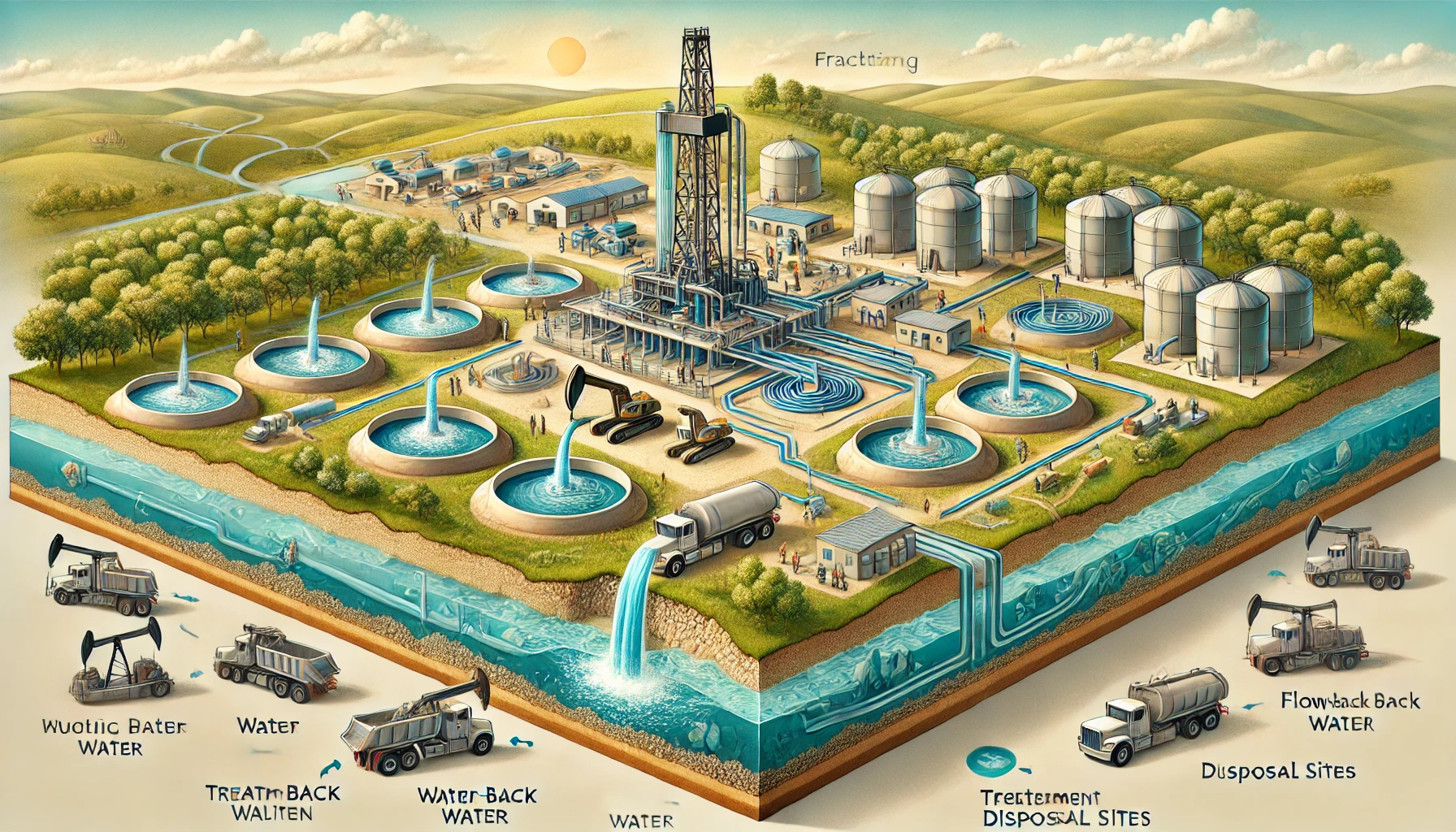Strategic Water Management: Reducing Environmental Impact in Hydraulic Fracturing

Researchers from the University of Waterloo have developed a comprehensive strategy to manage water resources in hydraulic fracturing, a process integral to shale gas extraction. Hydraulic fracturing, or fracking, involves injecting water, sand, and chemicals into shale formations to release natural gas, consuming substantial water volumes and generating significant quantities of flow-back water, which contains harmful chemicals that need proper management to avoid environmental contamination. The study focuses on optimizing a multi-period reverse logistics network to handle the substantial water demands and flow-back water generated during hydraulic fracturing.
Optimizing Water Resource Management
The researchers created a mixed-integer programming model to determine the optimal locations and capacities for water impoundments, treatment facilities, and disposal sites. This model aims to minimize fixed and operational costs while adhering to constraints such as freshwater withdrawal limits and production schedules. The model incorporates production scheduling of the hydraulic fracturing process and considers inventory balance, treatment, and disposal options. Additionally, a two-stage stochastic programming model was developed to address the uncertainty associated with water flows during the fracking operation. This model involves strategic location and capacity decisions in the first stage and operational decisions, such as water flows, in the second stage under independently sampled scenarios. A sample average approximation algorithm is proposed to solve the stochastic formulation.
Case Study: Real-World Application
The research's practical application was tested through a case study in the United States, specifically focusing on well pads in Pennsylvania and West Virginia. The study used actual data from technical reports and experimental data to simulate weekly natural gas production over a 52-week planning horizon. The hydraulic fracturing schedule indicated that each well would undergo a five-week drilling stage, followed by a fracturing stage that consumes 3,000 cubic meters of water per week and generates flow-back water in the subsequent weeks.
The model identified two optimal locations for treatment facilities at sites D and I, both of which began operations on week six to process the flow-back water as it became available. These facilities were initially set to handle 2,500 cubic meters per week but were expanded to 3,500 cubic meters per week to accommodate increased flow-back water volumes. An impoundment facility was established at location D with an initial storage capacity of 4,000 cubic meters, later expanded to 8,000 cubic meters to manage treated water and ensure a steady supply during periods of limited freshwater availability.
Strategic Facility Placement and Expansion
Two disposal sites were designated at locations E and I to manage the waste generated from the treatment process. The disposal site at location I reached full capacity by the end of the planning horizon, necessitating the transport of excess waste to the disposal site at location E. The strategic placement and expansion of these facilities optimized the network, balancing costs and operational efficiency while ensuring compliance with environmental regulations.
The model's effectiveness was demonstrated through a 12.8% reduction in freshwater usage, achieved by treating and reusing flow-back water. This reduction is significant given the large volumes of water required for hydraulic fracturing and the environmental concerns associated with freshwater consumption and waste management. The study underscores the importance of effective water management strategies in hydraulic fracturing, highlighting the potential for strategic network design to enhance resource utilization and minimize environmental impact.
Implications for Sustainable Shale Gas Production
By incorporating realistic modeling approaches and addressing uncertainty, the research provides valuable insights for decision-makers in the oil and gas industry. It emphasizes the need for integrated water resource management to ensure the sustainability and efficiency of shale gas production. The multi-period reverse logistics network design offers a flexible and scalable solution to the challenges of water management in hydraulic fracturing, with implications for reducing costs and mitigating environmental risks.
The study from the University of Waterloo presents a robust framework for optimizing water resource management in hydraulic fracturing. The multi-period reverse logistics network design model, supported by a two-stage stochastic programming approach, addresses the economic, environmental, and operational challenges of managing water resources in shale gas extraction. The case study results demonstrate the model's practical application and potential benefits, providing a valuable tool for enhancing the sustainability and efficiency of hydraulic fracturing operations.
- FIRST PUBLISHED IN:
- Devdiscourse










